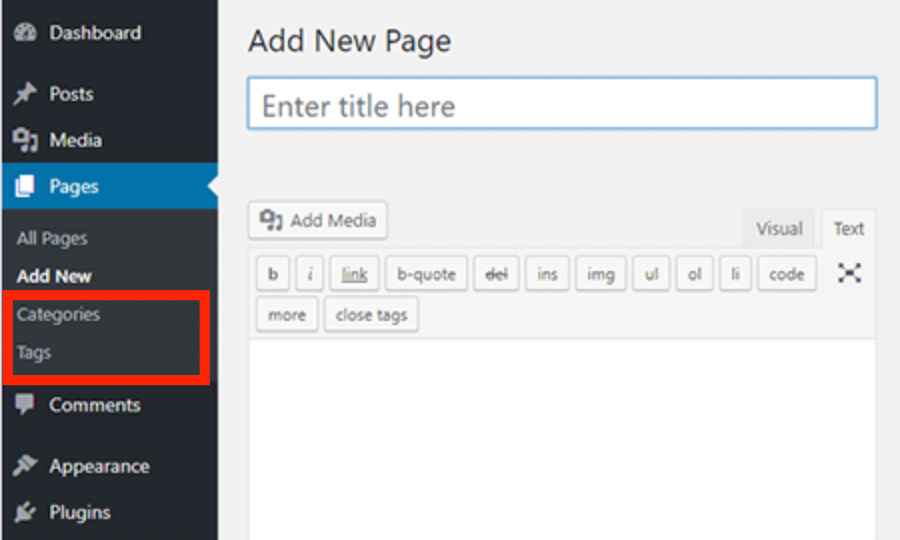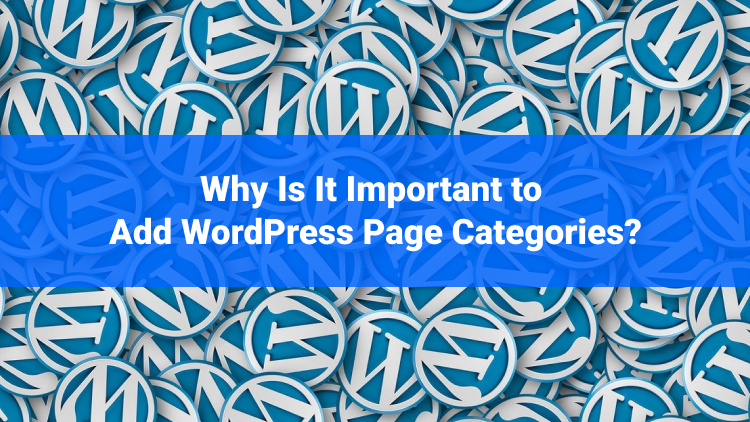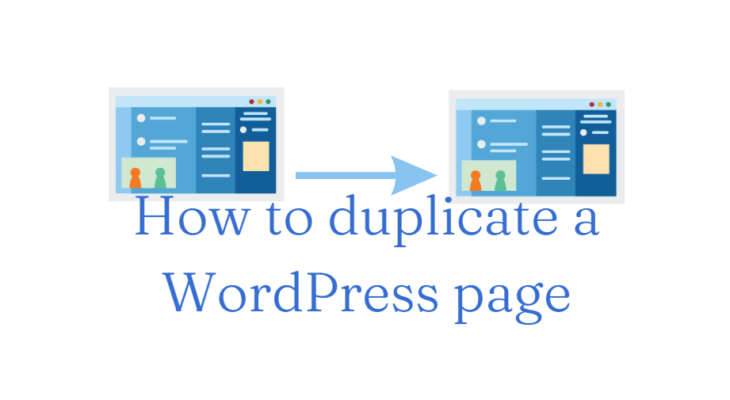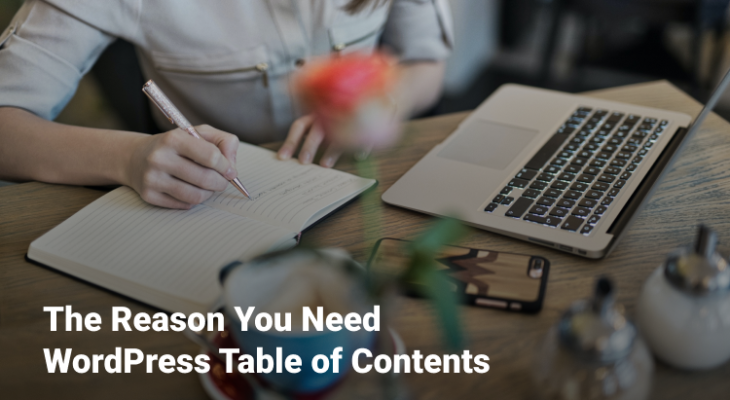- You Should Add Categories
- Adding Categories to Pages
- Category Page for an Easy-to-Navigate Website
- Why You Should Add Categories to Your Blog Posts
- How to Improve SEO and UX with Category Pages
- Conclusion
WordPress page categories provide a powerful organizational tool for managing and structuring your website’s pages.By assigning categories to your pages, you can effectively group related content together based on topics or themes.
This allows for easier navigation, improved user experience, and efficient content management within your WordPress site.
This Is Why You Should Add Categories to Your WordPress Pages
By default, WordPress provides categories and tags as built-in taxonomies specifically for blog posts. Categories are used to group content into broader classifications, while tags offer more specific descriptions of the content.
It’s important to note that, by default, categories and tags are only applicable to blog posts in WordPress. When creating a new page, you’ll observe that there is no provision to add categories or tags to your WordPress page.
However, there might be instances where you desire to assign categories and tags to your WordPress pages. This can be particularly useful when dealing with a large number of pages, as it allows you to organize and categorize your content effectively.
Furthermore, it enhances site navigation and facilitates visitors in locating related pages on your WordPress website more conveniently.
For instance, if you have multiple sales pages for various products within your online store, you can group them together under overarching categories. Similarly, you can apply the same principle to differentiate feature pages for your apps and software.
Adding Categories to WordPress Pages
To easily set up categories and tags for your WordPress pages, you can utilize the Pages with category and tag plugin. This plugin is free and doesn’t require any additional configuration.
Once you have activated the plugin, navigate to “Pages” and click on “Add New.” You will now notice that post categories and tags are available for your WordPress pages.
To create categories and tags for your pages, follow these steps:
- Adding a category: Go to “Pages” and select “Categories” from your WordPress dashboard. Enter a name and slug for your category. You can also choose a parent category if applicable. If you want you can add a category description, but opt for a descriptive name. Once you have provided these details, click the “Add New Category” button. Your newly added category for pages will be visible.

- Deleting a category: If you wish to delete a category, simply check the checkbox next to it and choose “Delete” from the Bulk Action dropdown. Then click the “Apply” button.
- Assigning categories and tags to pages: To assign a category or tags to a page, edit an existing page or create a new one. In the WordPress content editor, you will find a menu on the right-hand side where you can select the relevant category.
- For example, you can choose the “Features” category for a feature page. Similarly, you can add tags in the “Tags” field, separating them with commas if you want to include multiple tags. These tags can consist of keywords or phrases that describe your content. Once you have selected the desired category and added tags, simply update or publish your WordPress page.
By following these steps, you can effectively organize your WordPress pages using categories and tags provided by the Pages with category and tag plugin.
Category Page for an Easy-to-Navigate Website
Efficiently organizing your content benefits both web developers and visitors, as it saves valuable time when searching for specific information. For first-time visitors, this is particularly crucial, as they prefer not to spend excessive time navigating unfamiliar websites.
Therefore, it is essential to prioritize user-friendliness to ensure that your website is accessible to all visitors, regardless of their level of computer proficiency or familiarity with your site. By doing so, you can expand your audience and attract a larger influx of traffic. However, it’s important to note that while effective content organization facilitates discovery, it does not guarantee visitor satisfaction.
Consequently, it remains crucial to prioritize the creation of high-quality pages. Ensuring that your content is engaging, informative, and valuable will contribute significantly to visitor satisfaction and increase the likelihood of establishing a positive reputation.
Why You Should Add Categories to Your Blog Posts
In simpler terms, a category page is a page on your website that displays all the posts assigned to a particular category or multiple categories. It allows site owners to group posts with similar topics together, making it easier for visitors to find content related to their interests.
There are two primary reasons why you should leverage the full potential of category pages:
- Improving SEO: Category archive pages serve as landing pages when readers search for keywords or phrases related to a specific topic. By driving targeted traffic to your site, it significantly enhances your domain authority, resulting in higher rankings on search engines results pages (SERPs).

- Enhancing the user experience: Category pages encourage visitors to explore more posts within the same category they are interested in. They also provide a convenient way for users to navigate through different posts on your site. Additionally, by utilizing Google Analytics, you can identify which categories are the most popular and prioritize enhancing the posts within those categories.

In summary, category pages play a vital role in improving your website’s SEO by attracting relevant traffic and enhancing the overall user experience by facilitating content discovery and navigation.
How to Improve SEO and UX with Category Pages
When discussing the capabilities of a category page, it is essential to consider various aspects such as the category itself, its slug, description, and subcategories. To make the most of your marketing opportunities, here are some key points to keep in mind:
- Choose a clear, descriptive, and content-relevant category name. For instance, opt for names like “Films” or “Music” instead of vague terms like “Other forms of entertainment.” This ensures that your category accurately represents its content and improves user understanding.
- Utilize broad categories to cover a wide range of your blog posts. By employing overarching categories, you can effectively group and organize your content, making it easier for visitors to navigate through related topics.
- Take advantage of the separate category description feature on your website. By utilizing a category description, you not only enhance the user experience but also provide valuable information about the category’s purpose, content, or theme. This helps visitors better understand and engage with the category.
- Subcategories, also known as child categories, are narrower divisions within parent categories. For example, if you have a main category called “Business,” you can create subcategories like “Sales” and “Marketing” to delve deeper into specific topics. Implementing and displaying subcategories can boost the SEO of your website and offer improved browsing experiences for visitors. They can easily navigate through different types of content within your site.
By considering these aspects and implementing clear category names, comprehensive category descriptions, and relevant subcategories, you can optimize your website’s SEO, enhance user experiences, and facilitate seamless content browsing for your visitors.
Conclusion
In conclusion, while WordPress does not natively support page categories, there are ways to incorporate category-like functionality for organizing and classifying pages.
By utilizing plugins or custom coding, you can extend WordPress’s default capabilities and add categories to your pages. Implementing page categories can enhance content organization, improve site navigation, and assist visitors in finding related pages more easily.
Whether you opt for custom taxonomies, parent pages, or other methods, carefully considering your site’s structure and content can help you create a more intuitive and user-friendly experience for your WordPress website.
FAQ
No, WordPress does not provide built-in support for adding categories to pages. Categories are primarily meant for organizing and classifying blog posts. However, there are methods available, such as plugins or custom coding, that allow you to add category-like functionality to pages.
One way to add categories to WordPress pages is by using plugins specifically designed for this purpose, such as “Pages with category and tag” or similar plugins. Alternatively, you can create custom taxonomies or utilize the hierarchical structure of parent and child pages to achieve a similar categorization effect.
Adding categories to WordPress pages can help with content organization, especially if you have a large number of pages. Categories allow you to group related pages together, making it easier for visitors to navigate your site and find relevant information. It can also provide a more structured approach to managing your pages and improve the overall user experience.
Displaying page categories on your WordPress website typically requires modifying your theme’s template files or using a plugin that provides category listing functionality. You can customize the appearance and location of category listings based on your specific theme and design preferences.
By default, WordPress does not support assigning multiple categories to a page. However, with the help of certain plugins or custom coding, you may be able to implement this functionality. It’s important to check the capabilities of the specific plugin or code you are using to determine if multiple categories can be assigned to a page.



